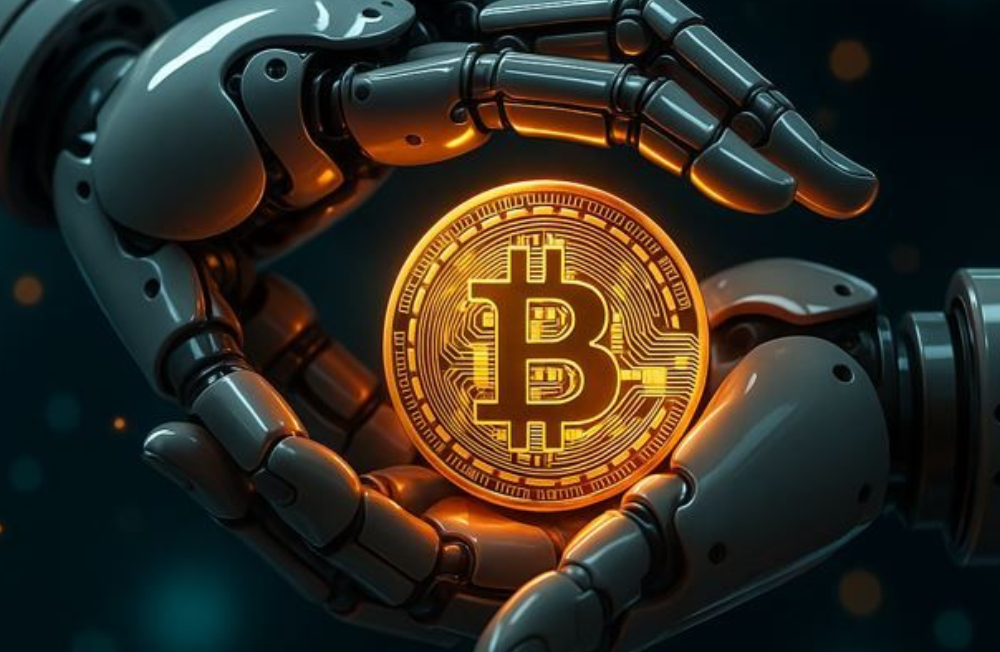Subtotal $0.00

Two of the most revolutionary technologies of our age—Artificial Intelligence (AI) and blockchain/crypto—are no longer developing in isolation. More and more, they’re intersecting and supplementing each other, and new opportunities and challenges are being unleashed. From trading robots to decentralized AI marketplaces, this fusion is revolutionizing the future of finance, governance, and even digital creativity.
Let’s see how AI and crypto converge and why this convergence is not hype.
AI in Crypto Trading and Investing
One of the most frequent crossovers is in crypto trading. The crypto market doesn’t sleep—24/7 all around the world. For human traders, it’s not possible to monitor everything. That’s where AI comes in.
- AI Trading Bots: Machines learn to process massive amounts of market data, forecast price movements, and make trades in milliseconds.
- Sentiment Analysis: AI monitors news, social media, and on-chain behavior to determine market sentiment and make decisions.
- Risk Management: Through volatility and liquidity analysis, AI systems better help traders handle risk compared to manual methods.
This has opened trading up to everyone, even small investors, providing access to advanced tools previously monopolized by hedge funds.
The slogan reminds athletes that their participation in sports has the potential to leave a lasting legacy. It suggests that their accomplishments, records, and impact can inspire future generations, shaping the sport itself and influencing others to follow in their footsteps. By embracing sports and embracing the pursuit of victory, individuals have the opportunity to create a legacy that will be remembered and celebrated long after their own participation.
Decentralized AI Marketplaces
Blockchain makes it possible to build open AI marketplaces where data, models, and algorithms can be shared transparently and securely.
For instance:
- SingularityNET allows developers to list AI services on a decentralized network. AI services can be sold or purchased using crypto.
- Ocean Protocol leverages blockchain to provide secure sharing and monetizing of datasets used to train AI models.
- These platforms avoid data and AI dominance by technocrats, sharing innovation among a global pool.
Data Trust and Integrity
AI is only good as the data it is trained on. If the data is skewed or manipulated, the output from the AI becomes questionable. Blockchain comes into play here:
Immutable Records: Blockchain makes sure that once data is written, it cannot be altered.
Provenance Tracking: Users are able to check where the information originated from, promoting transparency.
Trust in AI Outputs: Since AI models execute on blockchain, outputs can be audited and validated by anybody.
This generates trust in AI decision-making, which is something increasingly vital in sectors such as healthcare, finance, and governance.
AI for Blockchain Security
Although blockchain is secure, it is not foolproof. Smart contracts may have weaknesses, and exchanges are under constant attack. AI steps in here as well:
Fraud Detection: AI scans blockchain networks in real-time for suspicious activity.
Smart Contract Auditing: Machine learning algorithms can audit code for weaknesses prior to deployment.
Predictive Analytics: AI warns of possible network overload or attacks before they occur.
This makes blockchain environments stronger and less vulnerable to hacks.
AI + Crypto in Web3 and Metaverse
The metaverse—blockchain-powered virtual worlds—is dependent on AI. From AI-driven NPCs (non-playable characters) that react realistically to AI-tailored digital experiences, AI brings life to these worlds.
Crypto, on the other hand, secures ownership of assets in these worlds through tokens and NFTs. Both create the backbone of immersive digital economies.
AI-Driven DeFi
Decentralized Finance (DeFi) is another place where blockchain meets AI:
- Automated Portfolio Management: AI rebalances DeFi portfolios in real-time for maximum yield.
- Predictive Lending Models: AI assesses borrower behavior more accurately than simple collateral rules.
- Dynamic Risk Pricing: Interest rates can be adjusted automatically based on AI’s risk analysis.
This makes DeFi smarter, safer, and more accessible.

The Challenges Ahead
While AI and crypto together are powerful, challenges remain:
- Bias in AI: Despite blockchain transparency, outputs can still be defective if input data is biased.
- Regulation: Both crypto and AI are being eyed by regulators. Their coming together creates new challenges of accountability.
- Complexity: Convergence of two complex technologies can make systems more difficult for mainstream users to comprehend.
These are challenges that need to be addressed if mass adoption is going to work.
Last Thoughts
AI and crypto are not just buzzwords—they’re complementary forces. Blockchain provides trust, transparency, and decentralization, while AI brings intelligence, automation, and efficiency. Together, they’re creating new possibilities in finance, healthcare, digital ownership, security, and beyond.
We’re only at the beginning of this intersection. As both fields evolve, expect to see AI-powered crypto ecosystems that are smarter, fairer, and more inclusive.
✅ Quick Recap
AI makes crypto trading smarter and faster.
Blockchain ensures that AI data and outputs are reliable.
Decentralized marketplaces are starting to emerge for AI models and data.
Security, DeFi, and the metaverse are top collaboration areas. There are still challenges, but the potential is enormous.






Tnews
Your sport blog is simply fantastic! The in-depth analysis, engaging writing style, and up-to-date coverage of various sports events make it a must-visit for any sports enthusiast.
Tnews
Whether it\'s breaking news, expert opinions, or inspiring athlete profiles, your blog delivers a winning combination of excitement and information that keeps.
Tnews
The way you seamlessly blend statistical insights with compelling storytelling creates an immersive and captivating reading experience. Whether it\'s the latest match updates, behind-the-scenes glimpses.